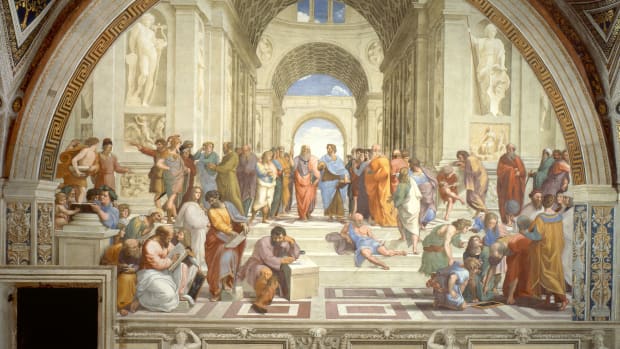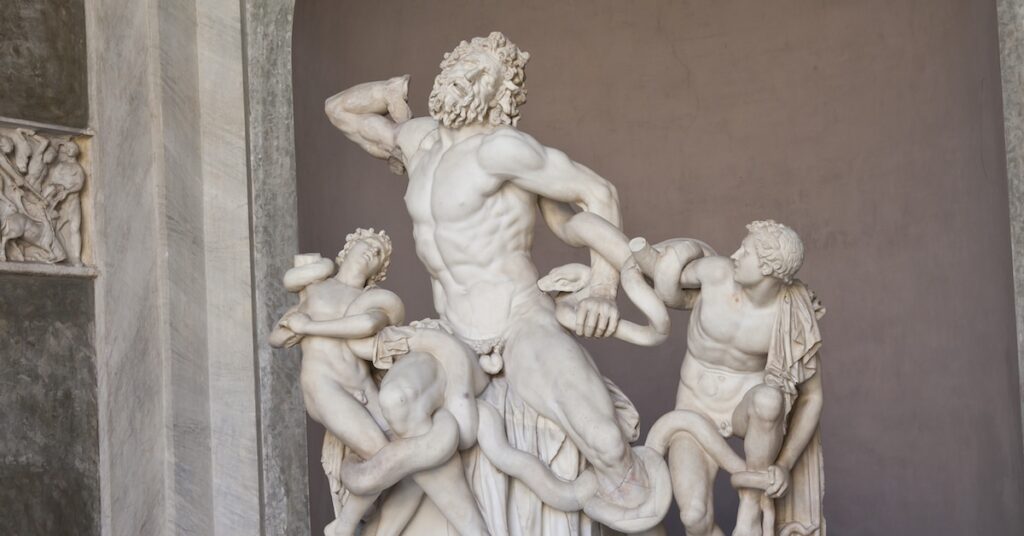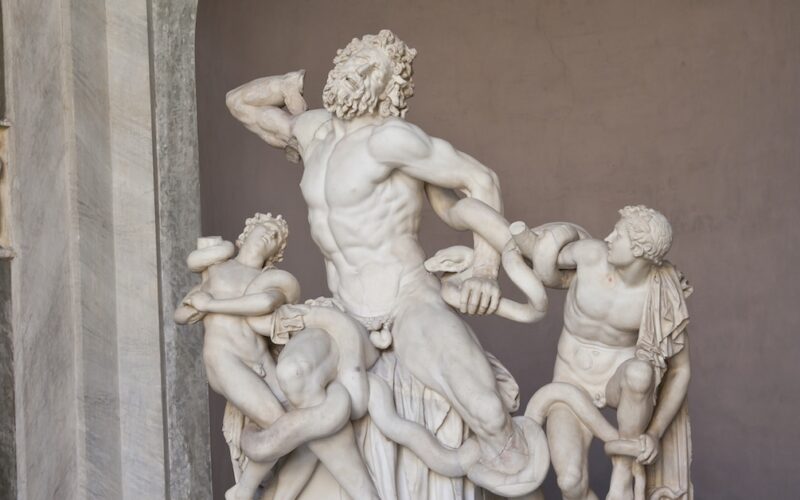The Hellenistic period was an ancient period that lasted from 323 BCE and 31 BCE. The span of the Hellenistic Era was between the death of the Macedonian ruler Alexander III popularly referred to as Alexander the Great, and the emergence of the Roman Empire by the victory of Antony and Cleopatra over the Ptolemaic Empire in the Battle of Actium. The Hellenistic period mainly focuses on the regions of the Mediterranean and Middle East parts of Asia
. After the demise of Alexander the Great, the decline of the Macedonian empire happened due to various internal problems among the Macedonian Generals. This resulted in the emergence of three empires, namely the Ptolemaic Kingdom, the Seleucid Empire, and Macedon. Following the emergence of the three empires, there were quite a lot of socio-economic reformations, alterations in the political system, scientific discoveries and inventions, and the formation of commercial trade routes.
Though the Hellenistic period saw great reformations, the Greek culture was predominant and was actively spreading throughout the world. The etymology of the term Hellenistic can be traced back to the word “Hellas,” which refers to someone who speaks Greek. The Hellenistic Era, though was short-lived, majorly included the disputes and wars between the Diadochi.
The Wars of the Diadochi:

The word Diadochi means successors, and they were the succeeding rulers of the Macedonian Empire spread all across the lands of the Middle–East and Western Asia. The vast empire of Alexander was split up between these Diadochi. Also, a series of wars known as the Wars of Diadochi happened. The first war of the Diadochi started in 322 BC and lasted till 319 BC. The first war ended after the fall of Pedriccus, who was the former leading commander of the Alexandar army
. Following the first war, some subsequent conflicts and struggles happened over the years fighting for the political territories. The Seleucid Empire under the control of Seleucus I Nicator has established in the year 312 BC and covered the vast Achaemenid Persian Empire, including Mesopotamia, Babylonia, Anatolia, Persia, and the Levant. The current Egyptian territory was under the control of Ptolemy and thus formed the Ptolemaic Empire. The Hellenistic culture and Greek language were very popular in all the empires. Antigonus and the Antigonid Empire ruled the Macedonian territory.
Though there were many uprisings, the major three empires dominated most Hellenistic Era. The Hellenistic era is historically very significant and prominent to understand Greek culture. But often, the Hellenistic period is being ignored in-between the Greek and Roman Empires.
The three empires and the significant cities extensively followed the Greek culture and traditions. The Hellenistic era can be stated as an improvisation era for the Greek culture and art forms. The reflection of their thoughts will be evident in the architecture, sculptures, paintings, and other art forms created during the Hellenistic Era.
Hellenistic Lifestyle:

The Hellenistic period was a prominent time for the flourishment and development of Greek culture, art, literature, food, and beliefs. The monarchy was the primary form of operations, and the architectural structures for Kings and Queens were gigantic and artistic. Kings and Queens conducted events and festivals to showcase their wealth and power. Aesthetic banquets, beautiful gardens, and luxurious lifestyles were part of the Kingship
. The Kings highly supported and rewarded artisans, sculptors, poets, and creators for their works and artforms. Exchange of expensive gifts and precious stones was prevalent between amicable kingdoms. The goldsmiths and silversmiths created beautiful jewelry pieces for the royal families, and they were very well compensated. Another prominent profession included trading. The emergence of new trade routes paved the way for the commercial exchange of products between different nations.
Sculptures and paintings were extensively made to reflect the original thoughts and to represent Greek Gods. The Hellenistic period saw a rise in the number of museums, libraries, art exhibits to showcase the creations of artisans. The art and crafts belonging to the Hellenistic period were well preserved, and the reflections and inspirations can very well be seen in contemporary pieces of modern art as well. Judaism was one of the widely practiced religions during the Hellenistic period
. Hellenistic Judaism primarily comprised Greeks who followed Judaism and were termed as Hellenistic Jews. Hellenistic Jews were in the Ptolemaic Empire, the Seleucid Empire. Hellenistic Judaism slowly started to fade by the end of the Hellenistic period due to the rise of Christianity and Islam during the later stages.
Hellenistic Architecture:

The Hellenistic buildings, arenas, temples, and other city structures were well-designed and perfectly planned. Some great examples of Hellenistic architecture include Stoas, Parthenon, Erectheion, Doric, Ionic, Corinthian order, etc. Public buildings were accessible to everyone and included a wide variety of structures, including temples, theatres, arenas, palaestra, and stadiums. Greek temples were dedicated to the Greek gods and deities. Temples were special places for the performance of rituals and offerings to the gods. During the Hellenistic period, the emergence of fusion architecture was very evident
. Hellenistic architecture in other nations evolved with the local type of architecture to produce a completely new form of architecture. For example, Graeco-Parthian, Graeco-Bactrian, Ptolemaic temples are all incorporated with inspirations from Ancient Greek architecture. The Temple of Apollo and the Pergamon temple are great examples of stunning Greek architecture. The Temple of Apollo was built during the year 331 BC. The total construction of the temple continued till 2 CE. The Temple of Apollo was located in Didyma, currently in Turkey.
The Pergamon Altar was built during the 2nd century BC. Another classical example of Greek architecture is the Temple of Zeus. The domestic buildings or houses were called Oikos. The civilian households were very well planned with an entrance, courtyard, pasta, kitchen, and living room. The houses were also multi-storied with staircases provided for the pathway. Civilian settlement regions had stores in the vicinity. Adjacent houses shared the same walls and the whole town was divided into separate divisions.
Hellenistic Sculptures:

Bronze sculptures and marble sculptures were widely famous during the Hellenistic period. Though the Ancient Greeks were the pioneers in the creation of sculptures, the Hellenistic artisans and sculptors explored a wide range of possibilities. The Hellenistic artisans came up with a three-dimensional form of sculptures with immense detailing. Sculptures were not only fancy decoratives but also realistic human depictions, gods, deities, kings, queens, abstract emotions, and folklore tales.
Some good examples of Hellenistic sculpture include Laocoön and His Sons, Pergamon Altar, Winged Victory of Samothrace, the statue of Aphrodite, the Dying Gaul, and the Boy with Thorn. Many of these Hellenistic era sculptures were recreated in marble by the artisans of the Roman Era. Romans widely used the Hellenistic period artifacts and sculptures as decoratives. One significant difference between the Ancient Greek sculptures and the Hellenistic period sculptures is the fact that Hellenistic period sculptures include many depictions of the common civilian population.
At the same time, the Classic pieces were mostly dedicated to Gods and Kings. The Hellenistic sculptures included children, older people, animals, women, and families. Sculptures were created as an expression of human emotions like happiness, agony, humility, etc. Apart from sculptures, the Hellenistic sculptors also created miniature figurines, miniature animals, miniature deities. Terracotta and Bronze were the primary materials for the figurines.
Hellenistic paintings:
Evidence of the paintings during the Hellenistic era can only be derived from inspirations and recreations from the Roman Era and other Eras. Most of the paintings were destroyed by invaders and conquerors of the later medieval period. Hellenistic literature and poems were depicted as landscapes with scenic attributes. The paintings of the Hellenistic era were discovered in the new cities that emerged during the Hellenistic period, like Alexandria of Ptolemaic Egypt and Antioch of the Seleucid Empire. Light and shade emphasize can be predominantly seen in Hellenistic period paintings
. With most of the paintings not available in the original form, the estimation of the paintings is difficult for historians. Other forms of paintings like terracotta painting, stone painting, wooden paintings, mosaic paintings were found, which can be dated back to the Hellenistic period.
The end of the Hellenistic period:
The slow decline of the Hellenistic period was due to the emergence of the Roman Empire. The Battle of Actium saw the end of the Ptolemaic Empire under Mark Antony and the emergence of the Roman Empire under Roman Octvium. He proclaimed himself as the first emperor of the Roman Dynasty. Roman Octavium acquired a new name as Augustus.
As the Roman Empire started to flourish successfully, the Greek culture disappeared. Even though traces of Greek culture and tradition can be seen in the Roman Era, the opposition to the Greeks eventually brought an end to the Hellenistic period. The initial instabilities and civil wars in the Roman Empire were also another important reason for the decline of the Hellenistic and Greek culture and traditions. With the emergence of the Roman Empire, the capital of Rome was shifted to Constantinople by Constantine.

